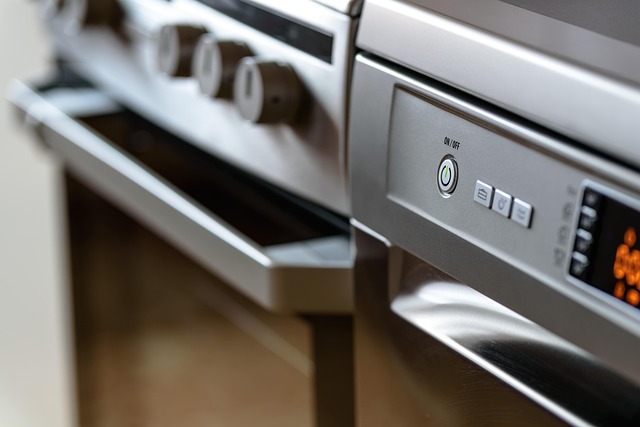Dishwashers are one of the most convenient and efficient appliances in modern homes. With a simple push of a button, dirty dishes are transformed into sparkling clean ones, but have you ever wondered how this miracle of technology works? Let’s take a closer look at the inner workings of a dishwasher and explore the step-by-step process that makes it all happen.
The Basics of Dishwasher Functionality
At its core, a dishwasher is a machine designed to clean dishes using water, detergent, and heat. The entire cleaning process is automated, requiring minimal human intervention. Here’s a breakdown of how a typical dishwasher operates:
Step 1: Loading the Dishwasher
The first step in the dishwasher process begins long before the machine starts running—it’s all about how you load the dishes. Proper loading ensures that water can reach every surface of the dishes and that the machine can efficiently wash them. Make sure plates, bowls, and utensils are placed in the correct sections, and avoid overcrowding the machine, as this can obstruct water flow.
Step 2: The Initial Fill and Water Heating
Once you start the dishwasher, the first task is filling the bottom basin with water. A water inlet valve opens, allowing water to enter the machine. In some models, water comes from a dedicated hot water line, while in others, it relies on the home’s regular water supply.
Once the water is inside, the heating element (usually located at the bottom of the dishwasher) kicks in to warm the water to the optimal temperature for cleaning. This is typically between 120°F to 160°F (49°C to 71°C), depending on the cycle and the type of detergent used.
Step 3: The Washing Phase
With the water at the right temperature, the dishwasher moves on to the cleaning action. Here’s how this happens:
- Spray Arms: Inside the dishwasher are rotating spray arms that shoot water across the dishes. These arms can have multiple nozzles that spray water from different angles to ensure that all surfaces of the dishes are cleaned. The pressurized water jets help remove food particles and grease.
- Detergent Dispenser: Detergent, whether in powder, liquid, or pod form, is released into the water during this phase. The detergent helps break down grease and food remnants, leaving your dishes spotless.
Step 4: The Rinse Cycle
After the washing phase, the dishwasher goes into the rinse cycle. This stage involves draining the dirty water and spraying the dishes with clean, fresh water to remove soap residue and any remaining debris. Depending on the model, there may be one or two rinse cycles.
- Rinse Aids: Some dishwashers use a rinse aid during this phase to help water sheet off the dishes and prevent spots, especially on glassware.
Step 5: The Drying Phase
Once the rinse cycle is complete, the final step is drying. There are a few different methods dishwashers use to dry dishes:
- Heated Drying: Most dishwashers use a heating element at the bottom of the unit to dry the dishes. The heated air helps evaporate any remaining moisture, leaving the dishes dry to the touch.
- Condensation Drying: Some energy-efficient models rely on the heat of the dishes themselves to evaporate moisture. In this case, the dishwasher’s interior is designed to be cooler than the plates, allowing the water to condense and drip off.
- Fan-Assisted Drying: Some dishwashers use a fan to circulate warm air, speeding up the drying process and helping remove any remaining moisture.
Step 6: The Final Drain and Clean-Up
At the end of the cycle, any leftover water is drained out of the machine, and the entire interior is left clean and dry, ready for your next load of dishes.
Key Components of a Dishwasher
Several key components make dishwashers efficient at what they do:
- Spray Arms: These rotating arms distribute water to clean all parts of the dishes.
- Heating Element: Heats the water and helps with drying.
- Water Inlet Valve: Controls the flow of water into the dishwasher.
- Detergent Dispenser: Releases detergent at the right moment during the wash cycle.
- Filters: Help capture debris and food particles so they don’t clog the system.
- Drain Pump: Moves dirty water out of the dishwasher and into the drainage system.
Why Dishwashers are Efficient
Dishwashers are designed to be energy and water-efficient. While hand washing uses an average of 20 gallons of water per load, modern dishwashers use as little as 3-4 gallons of water per cycle. Additionally, using a dishwasher saves time and ensures that dishes are sanitized, especially if the cycle includes a high-temperature wash and rinse.
Common Dishwasher Problems and How to Troubleshoot
Like all appliances, dishwashers can encounter issues. Here are some common problems and quick troubleshooting tips:
- Not Cleaning Properly: This could be due to clogged spray arms or a dirty filter. Make sure to clean both regularly.
- Not Draining: Check for a blocked drain hose or clogged filter.
- Leaking: Inspect the door seal or gasket for wear and replace it if necessary.
- Not Drying Dishes: Ensure the heating element is functioning and the drying cycle is complete.
Conclusion
Dishwashers are marvels of modern technology, transforming the tedious task of washing dishes into a simple push of a button. From the initial fill and water heating to the final drying phase, each part of the dishwasher works together to ensure your dishes are clean, sanitized, and ready for use. With proper care and maintenance, your dishwasher can continue to serve you well for many years.
Ready to put your dishwasher to work? Don’t forget to load it properly, choose the right detergent, and keep it clean to get the best performance out of it!


